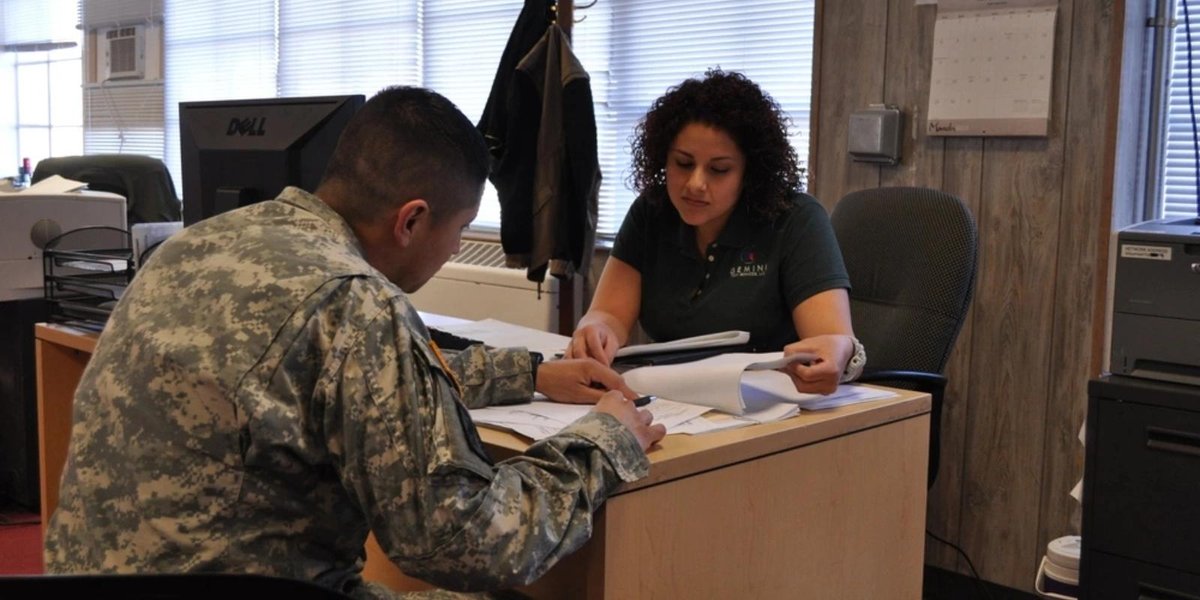DD214: EVERYTHING YOU NEED TO RECEIVE YOUR SERVICE RECORDS

There are likely many golden rules in the military you’ll come to discover over the length of your service. Yet, one that will bear repeating is the fact that if you need to do something, want to do something, or something simply exists, there is going to be a form. Such is the case of the DD214. You’ll see the form and any DD214 request are necessary for a range of important things that range from gaining meaningful employment to receiving the benefits you’ve earned once you’re a Veteran. Learn more about how to get the DD214 online, what it’s used for, and what it is, to begin with.
What Is a DD214?
The DD214 is also known as the Certificate of Release or Discharge from Active Duty which you’ll receive when you leave the military. Provided by the U.S. Department of Defense (DoD), you’ll receive it when you are either separating from the service, retiring, or being discharged from active duty.
A couple of versions of the DD Form 214 exist. There is the short, redacted version which has deleted information and has been edited, and the unredacted long version which is unedited. Edited forms will leave out information, of course, but primarily Authority for Separation, Characterization of Service, and Reason for Separation.
What the Certificate of Release or Discharge from Active Duty Is Used For
The DD214 replaced the War Department Adjutant General's Office (WD AGO) and Naval Personnel (NAVPERS) discharge documents in 1950. Its previous title was "Report of Separation from Active Duty" and was changed to the current title in 1979.
DD Form 214 is the primary documentation for completed military service, providing a verified record of the service member's time in the military and important details such as the character of service, rank held, awards and medals received, length of service, job specialty, and training completed. Those who served exclusively in the National Guard receive a different form called NGB-22.
A form DD214 is a valuable document that helps various government agencies, including the U.S. Department of Veterans Affairs (VA), assess eligibility for Veteran benefits. Employers can also request DD214 to evaluate skills, experience, and character, and verify eligibility for preferential hiring.
Additionally, the DD214 includes codes that describe a service member's reason for discharge and reenlistment eligibility. These codes are Separation Designator/Separation Justification (SPD/SJC) and Reenlistment Eligibility (RE) codes, respectively.
You’ll also need your DD Form 214 for eligibility proof for interment in a VA cemetery, obtaining a grave marker, or providing military honors to a deceased Veteran. Every eligible Veteran can receive a military funeral honors ceremony upon request from the family.
Copies of DD Form 214 are kept in the service member's 201 file or Official Military Personnel File, along with other personnel-related forms.
How to Get DD214
The first step to requesting your military records is to have and sign in to your milConnect account. Specifically, you’re going to need to have a Premium DS Logon account as both My HealtheVet and ID.me login information don’t apply here.
Once you’re in a Premium account, upgrade if necessary, click the Correspondence/ Documentation button from the home page and select Defense Personnel Records Information (DPRIS), which is found in the drop-down menu.
Click the Personnel File tab, choose the Request My Personnel File, fill out the necessary form, and check the boxes corresponding to the document(s) you are looking to receive found in the section labeled Document Index. Finally, click the Create and Send Request button, and you’re done.
But that’s how you receive your documents when you’re online. You can also either mail or fax a Request Pertaining to Military Records (Standard Form SF 180) to the National Personnel Records Center (NPRC).
Alternatively, writing a letter to the NPRC at 1 Archives Drive, St. Louis, Missouri 63138, or visiting the NPRC in person are also viable options.
Finally, Veterans can visit state and county Veterans agencies or hire independent researchers to pursue their request for the form.
For those who are burying a Veteran in a VA national cemetery and are a family member in need of the form, you can call the National Cemetery Scheduling Office at 800-535-1117.
If you are next of kin to a deceased Veteran, you can also mail or fax Standard Form SF 180, send a letter to the NPRC, visit the NPRC in person, visit state and county Veterans agencies, or hire independent researchers.
The form is also available to those not next of kin if the Veteran was discharged over 62 years ago as the National Archives opens all records to the public after this time. For those less than 62 years ago, limited information may be available through general public access.
Finally, suppose you are looking to find out whether or not your records were destroyed in the fire at the NPRC in 1973. In that case, you can reconstruct your DD214 records by contacting the center if you need to support a VA disability compensation claim.
Buddy Blouin
Buddy Blouin is a Contributing Writer at VeteranLife.com
Buddy Blouin is a Contributing Writer at VeteranLife.com
SHARE:



